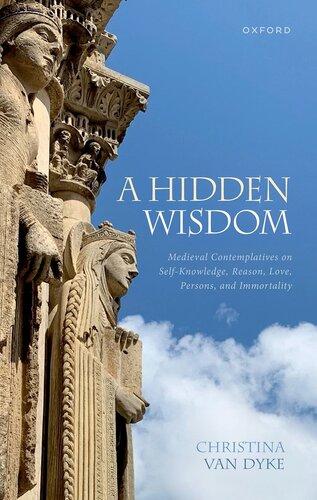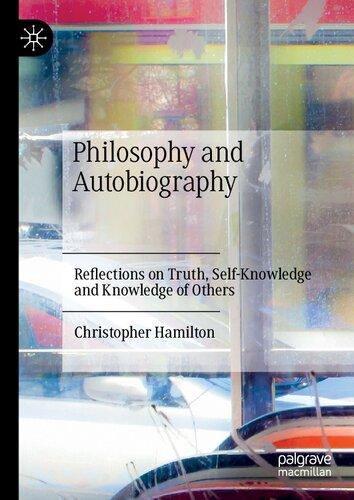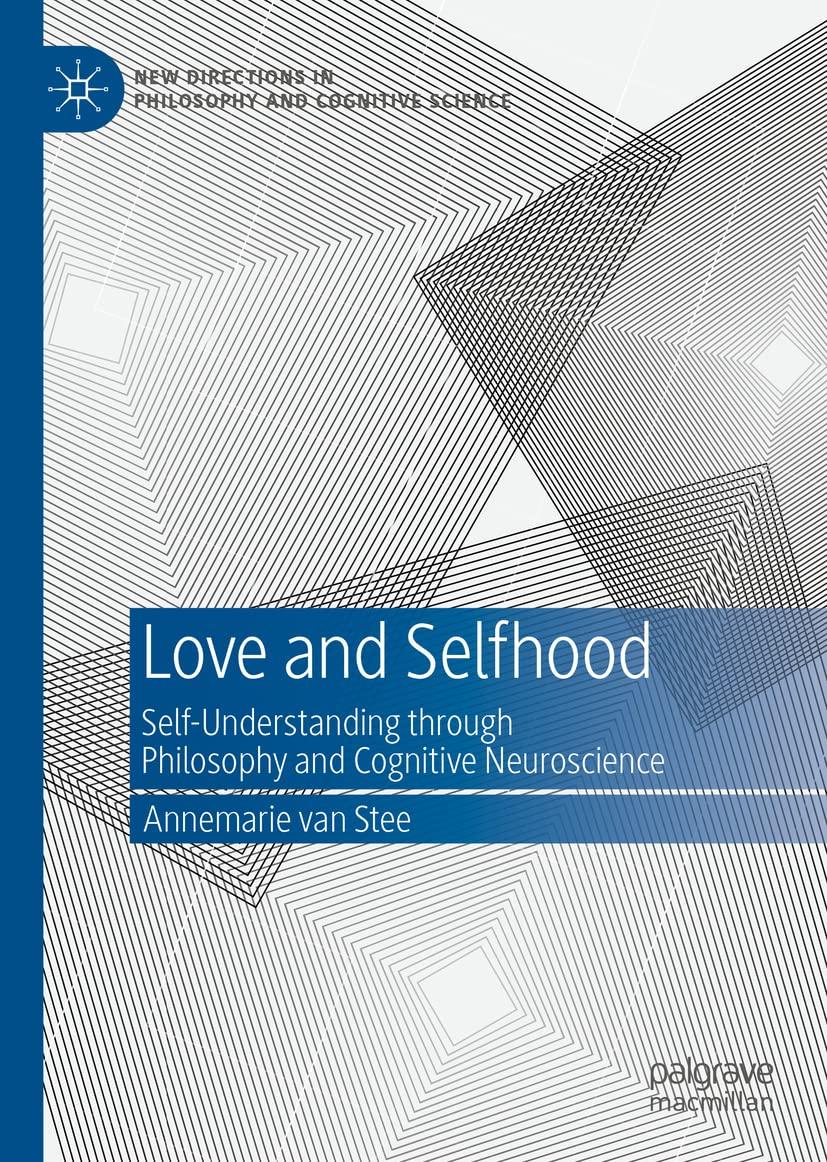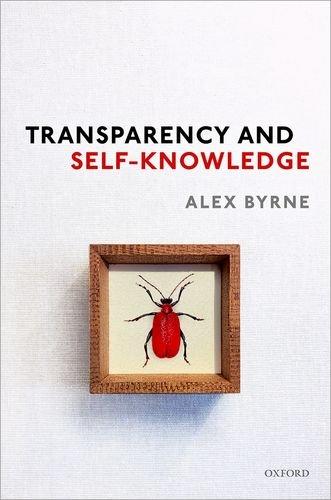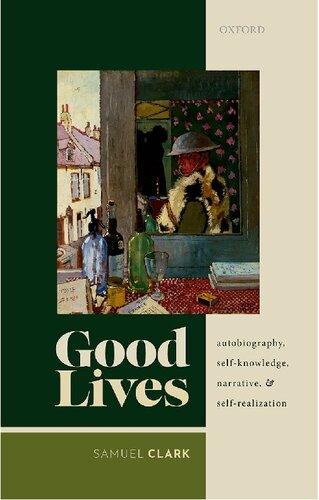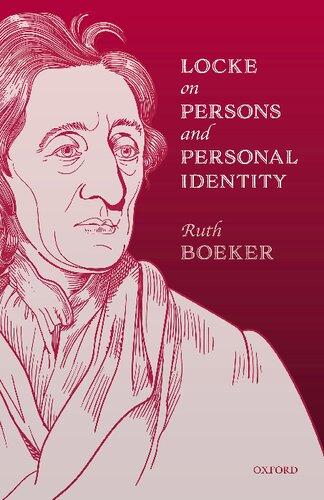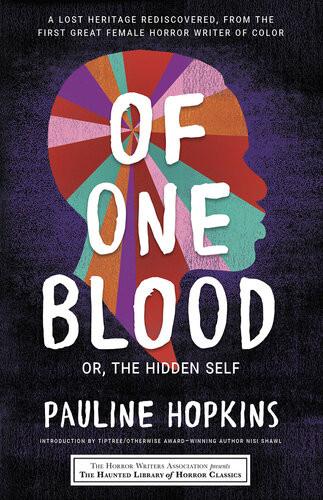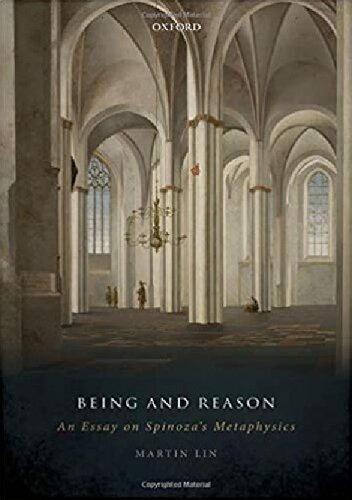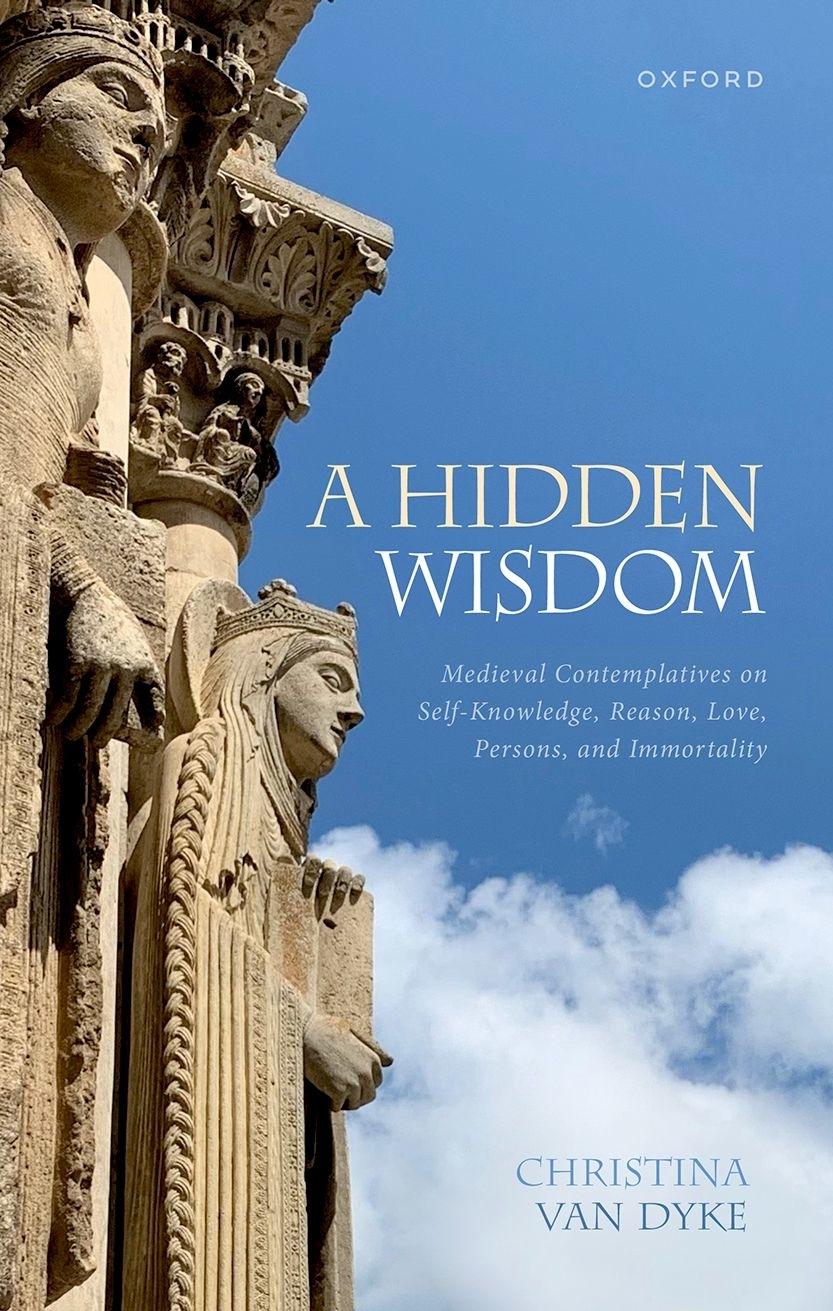Acknowledgments
This book has been a long time in the researching and writing, and I’ve worked up quite a debt of gratitude in the process. If I should have included you and have somehow forgotten, I’m terribly sorry. I encourage you to tell all your friends to read this book so that they can see what you were a part of, and I promise that I’ll start my acknowledgments list earlier in the process of my next book. First credit goes, as promised, to the person who helped me come up with a title that evokes exactly what I was hoping for, while also providing the perfect ‘hook’ for the grocery list of topics that make up the subtitle: Robin Dembroff, thank you! When the pandemic is over and/or we’re both in the same place at the same time again, dinner’s on me.
I also need to thank Bob Pasnau—not just for originally assigning me the chapter on mysticism in TheCambridgeHistory ofMedieval Philosophy but for cheering me on ever since then as I’ve delved further and further into the medieval contemplative tradition, and especially for providing me with a full set of very helpful comments on the entire manuscript. Ursula Renz also played a crucial role in this book’s history, although I’m sure she doesn’t know it; I had already gone back to writing about Thomas Aquinas when she invited me to write a chapter on self-knowledge in medieval mystics for an Oxford Philosophical Concepts volume she was editing, and it was that essay that made me realize that I needed to keep going with the contemplatives—I remain deeply grateful for that invitation and her encouragement of what I wrote. It is Christia Mercer, however, who can take direct credit for my actually writing this book. Not only did she tell me that I had a book in the making already in February 2016, but she then kept inviting me to give talks on
relevant topics at workshops at her Center for New Narratives in the History of Philosophy at Columbia University. Those workshops introduced me to both people and ideas that have expanded and deepened my understanding of medieval mysticism and contemplativism in fantabulous ways—I’m sure I haven’t done them full justice here, but special thanks in particular go to Katie Bugyis, Holly Flora, and Lauren Mancia for being kick-ass theologians, art historians, and historians willing to hang out with this analytically trained philosopher.
Speaking of people who have worked to create vibrant communities of scholars with cross-disciplinary interests, many thanks also to Mike Rea and the crew of his Logos conferences. The Logos conferences may be a thing of the past, but their impact remains, and I appreciate being made to feel part of a group (viz., philosophers of religion and analytic theologians) I’d long felt on the outside of. Thanks also to Scott MacDonald for continuing to hold the Cornell Medieval Colloquia each year, even now that they’re actually happening in Brooklyn (and, in 2020–2022, online). The chance to connect and reconnect there with stellar scholars and friends like Susan Brower-Toland, Peter King, Scott Williams, and Thomas Williams has made both my work and my life better in myriad ways I find it hard to quantify. I am also endlessly grateful to Thomas Williams for reading this entire manuscript and providing me with not only a host of useful comments but several much-needed laughs (“These people need to be beaten with a Jesus-stick”) and any number of pep talks. I look forward to finding out with you exactly what level of snark is allowed in heaven.
General thanks go to Elizabeth Barnes and Ross Cameron for their relentless support and encouragement; to Sara Bernstein for such good advice about so many things and always having my back; to Molly Brown—Star to my Barb and mother of my godpuppy Elodie (whose adorableness kept me going during the darkest part of the pandemic); to Amber Griffioen and Lacey Hudspeth for encouragement, support, and a place to vent about the mysticism haters; to Amy Seymour, Julia Staffel, and Natalie Hart for being my
writing partners at coffee shops in NYC, Boulder, and Grand Rapids; and to Laurie Paul for making me feel like it was obviousthat I was going to write an amazing book and that the only real question was how to make sure the right people read it. A most particular thank you to Keshav Singh for making me the cootie-catcher that decided which versions of the names of medieval figures I was going to use in this book when I was going bananas trying to decide between things like Johannes and John, of Oingt or d’Oingt. The result may be a bit idiosyncratic, but it is at least consistent throughout. Many thanks as well to Peter Momtchiloff, who has been wonderfully encouraging of this project and who sent me a few crucial email nudges at just the right moment in the fall of 2021.
It’s hard to know exactly what sort of gratitude I owe to Calvin College (now University). On the one hand, both the college and my department provided me with deeply appreciated support and encouragement when I was a full-time single parent and an assistant (and then tenured and then full) professor; on the other hand, after several truly stressful years, in 2020 continued budgetary shortfalls led the university to cut a number of tenured positions, including mine, and I’d be lying if I said that I missed being there. I do miss what Calvin used to be, however, and I have a deep appreciation not only for the mission it now seems to have lost but for the people I’ve been fortunate enough to have shared a department with there, particularly Lindsay Brainard, Terence Cuneo, Rebecca Konyndyk DeYoung, Ruth Groenhout (the next-door office mate than which none greater could be conceived), Matt Halteman (with only one ‘n’!), Lee Hardy, Al Plantinga (who spent several ‘victory lap’ years there after retiring from Notre Dame), Del Ratzsch, and Kevin Timpe. The tireless work of first Donna Kruithof and then Laura McMullen and Corrie Bakker kept me (relatively) organized and (mostly) in the right places at the right times, and I can’t thank them enough for that. I am also deeply grateful to the students who have passed through my life over the twenty years I spent as a faculty member at Calvin, many of whom I now count as friends. You taught me that the most effective way to communicate the importance and value of
philosophy is to live what you say you believe, and I am the better for it.
The next two paragraphs are lists of places that supported my research financially and/or invited me to speak to them about aspects of this project, and I’m very self-conscious about the fact that they might read like me bragging about what I’ve been privileged to receive, but I am both obligated to list them and quite grateful for the opportunities they all represent. That said, feel free to skip ahead to the part where I start talking about my family. In chronological order from when I began seriously to work on mystical experiences and immortality in 2014 to the present, I owe thanks to John Hawthorne’s New Insights and Directions for Religious Epistemology project for funding a Hilary Term fellowship at Oxford University, and to John Martin Fischer’s Immortality Project for a year-long grant to support my project “(Ever)Lasting Happiness: Immortality and the Afterlife,” which I amazingly got to combine with a year-long fellowship at Notre Dame’s Center for the Philosophy of Religion. (Both projects thought they were funding me to write a book on Aquinas on the afterlife, but instead they actually supported much of the initial research for this book, and I’m extremely grateful.) Thanks also to the University of Colorado at Boulder for inviting me to be their inaugural Distinguished Visitor; to the Aspects of Religious Experience grant that Laurie Paul and Mike Rea administrated for their generous support of Robin Dembroff’s and my “Embodied Religion: Social Structures and Religious Experience”; to the Calvin Alumni Research Grant for travel funding in 2017, which is when I took a number of the photographs that appear in this book; to Dean Zimmerman and the Rutgers Center for the Philosophy of Religion for a year-long fellowship there; and, finally, to Sidney Sussex College at the University of Cambridge for granting me the visiting fellowship I was only five weeks away from when the pandemic shut everything down in March 2020.
Here is a compressed list of places at which I’ve given talks related to the content of this book, and a far-too-truncated list of the wonderful people who have spent time talking to me about it there.
I am deeply grateful to all these places and all the people who have worked to get me there—with special thanks to the administrative staff at various institutions who made my presence possible! Thanks to audiences at all three regional APAs for their feedback on various talks; the Epistemology Brownbag series at Northwestern University; the Cornell Colloquium in Medieval Philosophy; L’Abri Fellowship International; the University of Konstanz; the University of Leeds Centre for Philosophy of Religion, as well the Leeds School of Philosophy, Religion, and History of Science Mangoletsi Lecture Series in 2019—with a special shout-out to Mark Wynn and Robbie Williams for hosting me so wonderfully; Lingnan University and the University of Hong Kong; Boğaziçi University in Istanbul; the University of St. Thomas in St. Paul; the Society for Medieval Logic and Metaphysics; the Brooklyn College Minorities and Philosophy chapter; the Sheffield Religious Experience workshop; the Center for New Narratives in the History of Philosophy at Columbia University; the University of North Carolina at Asheville, St. Mary’s Philosophy Department Retreat in South Bend; Creighton University; the 40th Anniversary Conference of the Society of Christian Philosophers; Shieva Kleinschmidt’s California Conference in Metaphysics; the Society of Medieval and Renaissance Philosophy; Georgetown University; St Andrew’s University; the Practical Philosophy Workshop + Women in Philosophy series at the University of Chicago; the Ayers Lecture in Philosophy and Theology at Furman University; the Ax:Son Johnson Foundation Seminar for the Concept of SelfKnowledge in Ancient and Modern Times; the University of Indiana at Bloomington; the Vrije University at Amsterdam; the American Academy of Religion; the Goliardic Society at Western Michigan University; the Medieval Philosophy Colloquium at the University of Toronto; the Rutgers Center of Philosophy of Religion; the Princeton Project in the Philosophy of Religion; the University of Trier; and Leiden University.
OK, and now to my family. Tolstoy famously begins AnnaKarenina with the claim that “Happy families are all alike; each unhappy family is unhappy in its own way.” I know that he’s supposed to have
meant that there is a list of common attributes that all families need in order to be happy, but if you’ve ever met my family you will understand why that sentence has always made me laugh. We are, in general, very happy and yet I can’t image our hilarious, bizarre family being like any other family in the world. Mom and Dad—I’m more glad than I can put into words that you’re still here to see this book come out, health scares of 2021 notwithstanding. I promise to write any number of other books if you promise to stick around to bug me about whether I’ve finished them yet! To my siblings, Jamie, Jon, and CarlaJoy, I love you excessively; our weekly Zoom family chats during the pandemic have made me feel closer to you than ever despite the physical distances between us, and have often left my stomach hurting from laughing so hard. Thank you also to Jamie and Robin and CarlaJoy and Steve for producing such excellent niblings—Jon and Aki, Max and Pepper have also been quite excellent catlings. I’ve already dedicated this book to David, but I want to make sure everyone knows that David’s amazingness goes far beyond skeptical side-eye and effective prodding to finish book manuscripts. My child, your presence in my life has made me happier than I could ever have expected or even desired. It may not have been easy to share a one-bedroom apartment with you during strict lockdown in 2020, but there’s no one else I would have rather gotten irritated with under those circumstances.
No one, that is, except perhaps my beloved, Andrew Arlig. (Which is good, because I got to share allthe lockdowns with you!) Andy, I have been working on this book the entire time that we have been together, and you have never been anything but supportive and encouraging about it. It’s been a challenge in any number of ways combining our lives over the past five and a half years, but a challenge that is more than worth the effort. Our love is not a unicorn—magical and illusory; it is a narwhal—rare, weird, and extremely real. Here’s to years and years of swimming together in the same direction.
Preface
In college and graduate school, I was taught that women didn’t do philosophy in the Middle Ages. My teachers were clear that this was a shame, but they were also clear that their job was to teach me facts, and the facts were that 1) ‘medieval philosophy’ happened primarily in the cathedral schools and universities of something called the ‘Latin Christian West’ during the eleventh–fifteenth centuries, and 2) women weren’t allowed to participate in these discussions.1 This first ‘fact’ has been completely overturned in the past twenty years; it would be difficult to find a well-respected book about medieval philosophy published today that didn’t acknowledge the importance of Greek, Islamic, and Jewish thought from the sixth century on, and new editions of old textbooks generally take pains to include a variety of these sources alongside the requisite Anselm, Abelard, Aquinas, Scotus, and Ockham.2 The truth of the second ‘fact’, however, remains largely accepted, for women were generally no more welcome in medieval Greek, Islamic, or Jewish schools than they were in their Latin counterparts. On this view of the history of philosophy, women were essentially barred from contributing to philosophy between Hypatia’s death in Alexandria in the fifth century and Descartes’s correspondence with Princess Elizabeth of Bohemia in the seventeenth century.
I don’t think what I was taught reflects badly on my teachers. At the time (I started college in 1990 and finished my PhD in 1999), this was not just the dominant narrative about women and medieval philosophy—it was the only narrative. It didn’t even bother me particularly. I wrote my dissertation on Thomas Aquinas’s theory of individuation and identity for human beings, and I was tenured for
my work on Aquinas’s metaphysics and Robert Grosseteste’s theory of illumination; I found this work both challenging and rewarding. I channeled my interests in gender and sexuality into side projects in the philosophy of gender, particularly projects that explored the relation between gendered eating and religion. Mentally, I compartmentalized my research as addressing either medieval philosophy (as characterized by ‘fact’ 1) or the philosophy of gender: I hadn’t realized yet that the ‘or’ could be inclusive. I originally read Caroline Walker Bynum’s monumental Holy Feast andHoly Fast, for instance, not because it was about the Middle Ages but because it was about women and the religious significance of food.3 The bookshelves in my office were packed with Latin texts and secondary literature on Augustine, Boethius, Anselm, Aquinas, Scotus, and Ockham; my bookshelves at home started to fill up with titles like HolyAnorexiaand GodandtheGoddesses: Vision,Poetry, andBelief intheMiddleAges.4
And then, in the academic year 2007–8, I spent my first sabbatical working with Bob Pasnau on The Cambridge History of Medieval Philosophy. At some point we had received all fifty-five commissioned chapters—over one thousand pages of state-of-theart scholarship on medieval philosophy in the Greek and Latin Christian, Islamic, and Jewish traditions—and we realized that not a single chapter discussed texts authored by medieval women. You could read the entire manuscript and fairly form the impression that women had taken a collective pass on thinking in the Middle Ages. This was an unacceptable state of affairs, but how to address it? Adding a chapter called something like ‘Women and Medieval Philosophy’ struck us both as the worst sort of ad hoc maneuver; adding more mentions of women in the chapters on, say, poverty or religious orders or war didn’t address the central issue, which was that it seemed highly implausible that women had really not contributed anything of value to the ongoing practice of philosophy in the millennium we were covering in the volume. The question Bob and I ended up asking each other was “Where were women writing in the Middle Ages, and what were they writing about?”
As soon as we phrased the question that way, I realized I already knew the answer—I just hadn’t connected the dots. My teachers had been right that women didn’t participate in philosophy as it was practiced in scholastic contexts (that is, in the cathedral schools and universities), but women did author a vast number of mystical and contemplative texts in the later Middle Ages, and these women were hardly writing in a philosophical or theological vacuum: they were integral parts of the intellectual, theological, and cultural movements of their day.
My joint expertise in thirteenth-century philosophy and gender studies meant that it fell to me to explore the medieval contemplative tradition for its philosophical insights. As I rolled up my sleeves and went to work on what became the chapter in the Cambridge History titled ‘Mysticism’, I discovered that although mystics and contemplatives in the Middle Ages might not have thought of themselves as engaging in philosophy per se—and although what they wrote often tends not to fit neatly into our contemporary conceptions of philosophy—they have a wealth of insightful things to say about philosophical topics of perennial interest (such as self-knowledge, reason and its limits, will and love, persons, and immortality and the afterlife). Furthermore, the fact that women writing in these traditions didn’t think of themselves as engaging in philosophy perse shouldn’t prevent us from considering their works as philosophical, for in this respect they resemble most of the other figures we today study under the descriptor ‘medieval philosopher’: Augustine’s Confessions was written as a spiritual memoir, for instance, and Anselm’s Ontological Argument is presented as part of a prayer for understanding. Even the paradigms of scholastic philosophy Thomas Aquinas, Duns Scotus, and William Ockham—were masters of theology (rather than philosophy) at their respective institutions.5 If we shift our conception of medieval philosophy to include contemplative texts (as I argue we should in Chapter 1), we find a host of women doing philosophy in the Middle Ages—including any number of women not addressed in this book,
which focuses on the ‘Latin’6 Christian tradition from the thirteenth to fifteenth centuries.
When my initial attempt to demonstrate the relevance of the contemplative tradition to the study of medieval philosophy appeared in the first edition of TheCambridge History of Medieval Philosophy (2010), however, my colleagues in the field didn’t seem particularly interested. As I continued to argue for its importance and to discuss the contributions of women to this tradition, I started to wonder if I was trying to make the medieval philosophical version of ‘fetch’ happen. Then, just as I was giving up hope, there came a surge of interest in the topic a surge due in large part, no doubt, to the successful efforts of scholars like Andrew Janiak, Marcy Lascano, Christia Mercer, Eileen O’Neill, and Lisa Shapiro to demonstrate the philosophical significance of women from the early modern period whose work had previously been downplayed or ignored.7 I started being asked to give talks on the medieval contemplative tradition and the women writing within it and to contribute papers on the contemplative tradition to special journal issues and edited volumes; my fellow historians of medieval philosophy started to ask me which women-authored texts they should include on their syllabi and on what topics. And then, in February 2016, Christia Mercer told me almost off-handedly over breakfast at the Nassau Inn at Princeton that the work I’d already done on this topic basically amounted to a book, and that I just should sit down and write it. And so, over the course of six very long and full years, I did.
Writing this book has been both challenging and exciting. It’s difficult to highlight the philosophical insights of women-authored texts without coming across as essentializing their status as women, for instance, but I’ve done my best. In each chapter I discuss the range of contemplative views on a given topic in works by both men and women from the Rome-based Christian tradition of the thirteenth–fifteenth centuries; focusing only on women’s contributions would produce as skewed a picture of the intellectual landscape as the traditional focus on scholastics has already produced. At the same time, I center the contributions of medieval
women throughout this book, for even within the contemplative tradition the philosophical and theological insights of medieval male figures consistently receive more attention than their female counterparts. Take, for instance, the introduction to PseudoDionysius: the Complete Works, in which Jean Leclercq traces Pseudo-Dionysius’s influence in Western Europe through the fourteenth and fifteenth centuries as follows:
The works of Dionysius provided a powerful contribution in the fourteenth and fifteenth centuries to the spirituality that flowered in the Rhine valley and elsewhere among theologians of the “abstract school,” as historians have termed it. Master Eckhart (d. 1327) proved capable of adopting fundamentally Dionysian themes, “while changing the meaning substantially.” Several other writers did more or less the same, each in his own way: Tauler (d. 1361); Ruysbroeck [sic] (d. 1381), Gerson (d. 1429), Nicholas of Cusa (d. 1464), Denis the Carthusian (d. 1471), Harphius (d. 1477), and Marsilio Ficino (d. 1499).8
Although this list includes several figures who are hardly household names, it excludes every single woman writing in the same tradition in this period—even those such as Marguerite Porete and Hadewijch who had an identifiable influence on Eckhart and Ruusbroec. This list also overlooks the centrality of Dionysian themes of unknowing, apophatic silence and divine darkness in works by any other number of women mystics at this time, such as Angela of Foligno.
Two more recent examples demonstrate the continued neglect of women in discussions of medieval philosophy and theology, and they represent merely the tip of the iceberg of scholarship that fits this bill. First, Stephen Boulter’s 2019 Why Medieval Philosophy Matters includes as “good examples of important medieval figures who were not scholastics” the following list: “John Scotus Eriugena, the Cathari and Albigensians, Bernard of Tours, Amalic of Bene, Joachim de Floris, Witelo, Theodoric of Freiburg, Raymond Lully, Roger Marston, Meister Eckhart, Raymond of Sabunde, and Nicholas of Cusa.”9 Again, not a single woman makes the cut. Second, the 2020 Oxford HandbookofMysticalTheology devotes a great deal of attention to the Western Christian medieval tradition, and yet an entire chapter
on Trinitarian indwelling fails to even mention Julian of Norwich, while the chapter on depth, ground, and abyss discusses Eckhart, Tauler, and others (again) without so much as paying lip service to Hadewijch’s and Marguerite Porete’s influence on those authors, much less their own original contributions; another chapter discusses theological epistemology and apophasis in both the ‘intellectualist’ and the ‘affective’ Christian mystical traditions without naming a single woman, despite the overwhelming number of medieval women who write about these topics.10
If I have leaned too far in this book towards prioritizing women’s voices over those of their male contemporaries, it is in the spirit of Aristotle’s advice in the NicomacheanEthics2.7 to steer towards the opposite extreme in attempting to reach the mean—in this case, the mean of justice.11 Mysticism and contemplativism have traditionally been some of the very few contexts in which people otherwise denied a voice by Christian institutions can speak truth to power and be heard. Their focus is not on intensive study of hierarchical systems of knowledge and texts available primarily to the elite but on accessible practices such as meditation and contemplative prayer, and on personal experience of God, which is available to anyone. Because the Christian tradition acknowledges mystical experiences and knowledge of God’s hidden truths as granted by God via an act of grace, the philosophy and theology of mysticism and contemplativism can never be simply the purview of the powerful: they are available to anyone and everyone God chooses. (And, as Scripture teaches us, God consistently chooses the disenfranchised and overlooked.) One of the most important legacies of the medieval contemplative tradition is the way in which it creates space for people to connect directly with God and to claim to God’s own authority in their love-filled striving to unsettle the unjust status quos of this world. (Consider Catherine of Siena, for instance, the twenty-fourth child of a Sienese cloth-dyer who becomes an influential political figure as well as a renowned spiritual teacher— and is not merely canonized by the Catholic church but eventually made one of its Doctors.) By giving the views of medieval women
more than equal time in this book I hope to highlight (and contribute to) this legacy, at the same time that I work to contextualize those views in the intellectual and cultural contexts necessary for understanding them.
A few quick notes about the book as a whole before I start actually doing this work and not just talking about it. First, I use the terms ‘mystical’ and ‘contemplative’ more or less interchangeably throughout this book, with a preference for ‘contemplative’. While fields outside philosophy are comfortable talking about medieval mystics and mysticism, philosophers tend either to be squeamish about those terms and their anti-rationalist connotations or to associate the terms with projects rather different from those medieval figures understood themselves to be undertaking. (See Chapter 1 for further discussion of this phenomenon.) In addition, the label ‘mystical’ is sometimes taken to apply only to reports or accounts of actual mystical experiences, and ‘mystic’ to apply only to someone who has such experiences. The set of people who report such experiences, however, does not overlap neatly with the set of writings and people we today commonly think of under those descriptions—Meister Eckhart, for instance, is one of the very few figures familiar to contemporary philosophers as a medieval mystic, and yet he himself never reports having mystical experiences. Thomas Aquinas, on the other hand, does report having mystical experiences, and yet he is thought of today not as a mystic but as a paradigm of analytic thought. The term ‘contemplative’, on the other hand, doesn’t quite connote the full range of relevant literature and experiences to most philosophers (or non-philosophers), who tend to associate contemplation with intellective activity, and so I use both terms. I do use the term ‘contemplative’ more often than ‘mystical’, however, both because I want people to start associating the medieval contemplative tradition with theories about feelings and love as well as cognition, and because I want to emphasize this tradition’s connections to its ancient predecessors and to its early modern, modern, and contemporary successors.
Second, my treatment of topics and figures in this tradition is meant to be representative rather than exhaustive—a tasting menu, if you will, rather than a series of full courses. One of my goals while writing this book has been to keep each of its chapters relatively short and accessible in order to avoid overwhelming the reader with the sheer volume of primary texts still available (both in the original languages and in translation) and with the enormity of secondary literature on these texts available from outside philosophy. When confronted by seemingly endless shelves full of primary texts (there are at least forty separate volumes just of English translations in the ‘Christian Pre-1501’ section of Paulist Press’s Classics of Western Spirituality, for instance), even well-motivated scholars of medieval philosophy might well throw up their hands and return to the equally voluminous but more familiar terrain of Thomas Aquinas. The fact that the best secondary literature on these texts tends to consist of densely written 600-plus-page tomes (or whole series of 600-pluspage tomes, like Bernard McGinn’s magisterial seven-volume Presence of God) means that only people already committed to developing a specialization in this area are likely to get far enough in to appreciate what the tradition has to offer. For that reason, although I provide resources for further primary and secondary research in footnotes and in the bibliography, I try to provide representative samples of primary texts via relatively succinct quotes, and I generally avoid engaging secondary research in the main text.
Speaking of quotes, I have chosen to cite mostly primary texts for which there are high-quality, readily available English translations, and almost all my quotes come from those English translations. Texts from the later medieval contemplative tradition are written not just in Latin but in a host of vernaculars, including Old French, Middle Dutch, fourteenth-century Tuscan, Franco-Provençal, Middle Low and Middle High German, and Middle English; it is difficult to access many of these manuscripts, and even print versions of many of these texts in their original languages are hard to track down and/or lack critical editions. Since one of my central goals is to
encourage people to engage with this tradition, I’ve stuck to translations and works which most people should be able to access without too much difficulty.
Finally, throughout this book I concentrate my attention primarily on mystics and contemplatives from Western Europe in the thirteenth–fifteenth centuries.12 This focus is, on one level, arbitrary and porous: I include Richard of St. Victor (d.1173), for instance, but not Bernard of Clairvaux (d.1153). (Bernard’s influence is nevertheless felt throughout, particularly via discussion of the latethirteenth-century Meditations on the Life of Christ, which paraphrases a number of sermons from Bernard’s commentary on the Song of Songs.) I also don’t venture too far into the fifteenth century: Julian of Norwich and Christine de Pizan take us into the first half of the 1400s, and no discussion of medieval contemplative thought would be complete without Thomas à Kempis (d.1471), but the Italian Renaissance is in mid-swing by the fifteenth century. (Dante is dead already in 1321, a full half-century before Catherine of Siena is even born, and the contemplative works of Marsilio Ficino and Giovanni Pico della Mirandola in the second half of the fifteenth century display a Platonism that is more humanist than Augustinian.)
On another level, however, this focus is not arbitrary at all: it encompasses the height of the production of mystical and contemplative texts in the Rome-based Christian tradition, a period in which what Herbert Grundmann famously termed ‘The Women’s Religious Movement’ is at its height.13 As the number of lay religious movements focused on the contemplative life explodes, laypeople as well as ecclesiastical and scholastic authorities become engaged in the search for union with God and share their insights and personal experiences. The fact that so many women in this period not only speak but are listened to and taken as spiritual authorities (as testified to by the sheer number of extant manuscripts) is my primary reason for focusing on the Christian contemplative tradition over Jewish or Islamic mystical and contemplative traditions in the thirteenth-fifteenth centuries, in which women have less of a voice.
Scholastic discussions become increasingly specialized in the thirteenth century and beyond, leading to the infamous caricature of their being focused on minutiae such as “How many angels can dance on the head of a pin?”14 The place where foundational questions about the life worth living—both theoretical and practical— continue to be asked and investigated in the later Middle Ages is the contemplative tradition. The resulting wealth of mystical and contemplative literature should engage anyone interested in the idea of philosophy as a Way of Life, whether or not you personally share their religious commitments, for these are people who tried their best to practice what they believed, to put theoria into praxis and who see debates about who we are and how we should live as posing questions whose answers have potentially eternal consequences.15
Various bits of this book started life as parts of papers published elsewhere. In chronological order of publication, those papers are “Self-Knowledge, Abnegation, and Fulfillment in Medieval Mysticism,” in Self-Knowledge, ed. U. Renz, Oxford Philosophical Concepts Series (Oxford: Oxford University Press, 2016), 131–45; “What has History to do with Philosophy? Insights from the Medieval Contemplative Tradition,” in Philosophy and the Historical Perspective, ed. M. Van Ackeren, Proceedings of the British Academy 214 (Oxford: Oxford University Press, 2018), 155–70; “‘Many Know Much, but Do Not Know Themselves’: Self-Knowledge, Humility, and Perfection in the Medieval Affective Contemplative Tradition,” in Consciousness and Self-Knowledge in Medieval Philosophy: Proceedings of the Society for MedievalLogicandMetaphysicsVol.14, ed. G. Klima and A. Hall (Newcastle upon Tyne: Cambridge Scholars Publishing, 2018), 89–106; “The Phenomenology of Immortality (1200–1400),” in The History of the Philosophy of Mind Vol. 2: Philosophy of Mind in the Early andHigh MiddleAges, ed. M. Cameron. (London: Routledge, 2019), 219–39; “Medieval Mystics on Persons: What John Locke Didn’t Tell You,” in Persons: a History, ed. A. LoLordo, Oxford
Philosophical Concepts Series (Oxford: Oxford University Press, 2019), 123–53; “The Voice of Reason: Medieval Contemplative Philosophy,” Res Philosophica 99/2 (2022), pp. 169–85; “Lewd, Feeble, and Frail: Humility Formulae, Medieval Women, and Authority,” in OxfordStudiesinMedievalPhilosophy Vol.10(Oxford: Oxford University Press, forthcoming). My thanks to the relevant publishers for permission to reproduce material here.
1 For a history of the development of these institutions, see Jon Marenbon’s two-volume Early Medieval Philosophy: 480–1150 (London: Routledge, 1983) and Later MedievalPhilosophy: 1150–1350(London: Routledge, 1987).
2 Marenbon’s Medieval Philosophy: An Historical and Philosophical Introduction (London: Routledge, 2006), for instance, is meant to supersede the two-volume work mentioned in note 1 by addressing “all four main traditions of medieval philosophy that go back to the same roots in late antiquity: the Greek Christian tradition, the Latin tradition, the Arabic tradition, and the Jewish tradition (written in Arabic and in Hebrew)” (Preface, p. 1/i).
3 Caroline Walker Bynum, Holy Feast and Holy Fast: The Religious Significance ofFoodto MedievalWomen (Berkeley: University of California Press, 1988).
4 Rudolph Bell, Holy Anorexia (Chicago: University of Chicago Press, 1985); Barbara Newman, God and the Goddesses: Vision, Poetry, and Belief in the Middle Ages (Philadelphia: University of Pennsylvania Press, 2003).
5 This has led to an ongoing heated (if not particularly productive) debate about whether these figures (especially Aquinas) should be thought of as philosophers at all. Personally, I believe that we’re better off expanding rather than defending philosophy’s borders. For a similar view, see Peter Adamson’s “If Aquinas is a philosopher then so are the Islamic theologians” (https://aeon.co/ideas/if-aquinas-is-a-philosopher-then-so-are-the-islamictheologians>) and also his Medieval Philosophy: a History of Philosophy without Any Gaps, Vol. 4(Oxford: Oxford University Press, 2019).
6 The reason for putting scare quotes around ‘Latin’ here is that although church, legal, and university authorities continue to write in Latin during this period, many of the women discussed in this book wrote or dictated in their native vernacular.
7 See, e.g., Eileen O’Neill and Marcy Lascano’s Feminist History of Philosophy: The Recovery and Evaluation of Women’s Philosophical Thought (Cham: Springer Nature Switzerland, 2019); Christia Mercer’s “Descartes’ Debt to Teresa of Avila, or why we should work on women in the history of philosophy,” Philosophical Studies 174/10 (2017), pp. 2539–55. See also the resources of Project Vox at
https://projectvox.org/about-the-project/ and New Narratives in the History of Philosophy at https://www.newnarrativesinphilosophy.net/index.html.
8 Jean Leclercq, Pseudo-Dionisius: the Complete Works, trans. Colm Luiheid (Mahwah: Paulist Press, 1987), p. 30.
9 Stephen Boulter, Why Medieval Philosophy Matters (London: Bloomsbury Academic, 2019), p. 161. Unfortunately (and egregiously), the book also neglects Greek Byzantine, Islamic, and Jewish contributions.
10 The Oxford Handbook of Mystical Theology, ed. E. Howells and M. McIntosh (Oxford: Oxford University Press, 2020). For an argument that these omissions and those of similarly marginalized voices are actively (if unintentionally) pernicious, see my “Review of The OxfordHandbookofMystical Theology” in Faith andPhilosophy 38 (3) 2021, 396–402.
11 The issue of epistemic injustice in particular has received a great deal of attention in the past fifteen years or so: who is believed when they speak, and in what contexts and on what subjects? Who is given the conceptual tools to make sense of their own situations and who lacks them? Two of the most influential books in this discussion have been Miranda Fricker’s Epistemic Injustice: Power and the Ethics of Knowing (Oxford: Oxford University Press, 2007) and Jose Medina’s The Epistemology of Resistance: Gender and Racial Oppression, Epistemic Injustice, and Resistant Imaginations (Oxford: Oxford University Press, 2013).
12 Unfortunately, both Hildegard von Bingen (1098–1179) and Teresa of Avila (1515–82) fall outside this scope. I highly recommend further examination of both, however, for their important philosophical and theological insights. See, for starters, Julia Lerius’s “Hildegard von Bingen on Autonomy,” in Women Philosophers on Autonomy: Historical and Contemporary Perspectives, ed. S. Berges and A. Sinai (New York: Routledge, 2018), pp. 9–23, and Christia Mercer’s “Descartes’ Debt to Teresa of Avila.”
13 Grundmann’s groundbreaking 1935 work has been translated and republished as Religious Movements in the Middle Ages: The Historical Links between Heresy, the Mendicant Orders, and the Women’s Religious Movement in the Twelfth and Thirteenth Century, with the Historical Foundations of German Mysticism (Notre Dame, IN: University of Notre Dame Press, 1995).
14 There is no historical record that this was an actual topic of discussion in the Middle Ages, but there are a number of discussions about whether or how angels move, and whether or how angels can occupy spatial location. See, e.g., Thomas Aquinas’s treatise on angels in Summa theologiae Ia 50–64.
15 For the classic source of the idea of philosophy as a way of life, see Pierre Hadot’s Philosophy as a Way of Life, ed. Arnold Davison; trans. by Michael Chase (Malden: Blackwell Publishing, 1995).
I1.1.
I1.2.
I1.3.
2.1. 2.2. 2.3. 2.4. 2.5.
I2.1.
I2.2. 3.1. 3.2.
I3.1.
I3.2.
I3.3.
List of Figures
St. Francis, Margaritone d’Arezzo, mid-thirteenth century, Vatican Museum
BridgetofSweden, Master of Soeterbeeck, 1470, Metropolitan Museum of Art, New York
Catherine ofSiena, Lorenzo di Pietro, mid-fifteenth century, Palazzo Pubblico, Siena
Lunette, anonymous, first half of the twelfth century, church of San Giusto, Volterra
Prudence, Piero del Pollaiolo, 1470, Uffizi Gallery, Florence
Detail of ‘Sight’ panel of the Lady and the Unicorn tapestries, Flemish workshop, c.1500, Musée de Cluny, Paris
Esaltazione della Croce, Maestro di Tressa, 1215, Pinacoteca Nazionale di Siena
Lamentation over the DeadChrist, Ambrogio Lorenzetti, 1342–4, Pinacoteca Nazionale di Siena
Entrance into the beguinage of Antwerp, seen from inside
Beguinage of Amsterdam, central courtyard, seen from church
Lady Reason with mirror and laying foundation with Christine, Cité des dames, c.1410–14, Harley MS 4431, f. 290r, British Library. Reproduced courtesy of the British Library
Detail of Adoration ofthe Magi, Andrea Mantegna, mid-fifteenth century, Uffizi Gallery, Florence
Detail of Saint Humility andScenes from Her Life, Pietro Lorenzetti, c.1335–40, Uffizi Gallery, Florence
Madonna ofthe Magnificat, Sandro Botticelli, 1483, Uffizi Gallery, Florence
Annunciation of Mary with reading tree and multiple books, Orsini Castle, Bracciano
I3.4.
I3.5.
I3.6.
I3.7.
4.1.
St. Catherine ofAlexandria, workshop of Jan Crocq, c.1475–1525, Metropolitan Museum of Art, New York
The Libyan Sibyl, Guidoccio Cozzarelli c.1482–3, floor of Siena Duomo
The “Royal Portal,” 1150–70, west transept, Chartres Cathedral
Detail of statuary, c.1225–30, north portal, Reims Cathedral
Saint Humility andScenes from Her Life, Pietro Lorenzetti, c.1335–40, Uffizi Gallery, Florence
4.2.
4.3.
The Holy Family, attributed to Lux Maurus, c.1517–27, Musée de Cluny, Paris
Detail of Meditationes vitae Christi; ms. Ital. 115, Bibliothèque nationale de France. Credit: Johannes de Caulibus, Meditatione de la uita delnostro
Signore Ihesu Christo, XIV century. National Library of France. Department of Manuscripts.
4.4.
4.5.
I4.1.
I4.2.
I4.3. 5.1.
5.2. 5.3.
I5.1.
6.1.
Detail of MemorialTabletofHendrikvan Rijn, Johan Maelwael, c.1363, Rijksmuseum, Amsterdam
Detail of Virgin ofthe Rose Garden, Master of the Saint Lucy Legend, c.1475–80, Detroit Institute of Arts Museum
Detail of side panel, “Attack on the Castle of Love,” ivory casket, c.1300–25, Musée de Cluny, Paris
Mirror-case with “Attack on the Castle of Love,” Paris workshop, c.1320–40, Museo Nazionale del Bargello, Florence
St. Catherine ofSiena Exchanging Hearts withChrist, Guidoccio Cozzarelli, late fifteenth century, Pinacoteca Nazionale di Siena
Dittico delBeato Andrea Gallerani, verso, detail showing four mendicant pilgrims, Dietisalvi di Speme, c.1270, Pinacoteca Nazionale di Siena
Detail of tapestry of Arithmetic, Flanders workshop, c.1520, Musée de Cluny, Paris
Detail of Allegory ofGoodGovernment from The Allegory ofGoodandBad Government, Ambrogio Lorenzetti, 1338–9, Palazzo Pubblico, Siena
Personified figures of Humility and Pride from illumination of La Somme le Roi, workshop of Honoré, c.1280
The LastJudgment, detail of Paradise, Giovanni di Paolo, c.1460–5, Pinacoteca Nazionale di Siena
